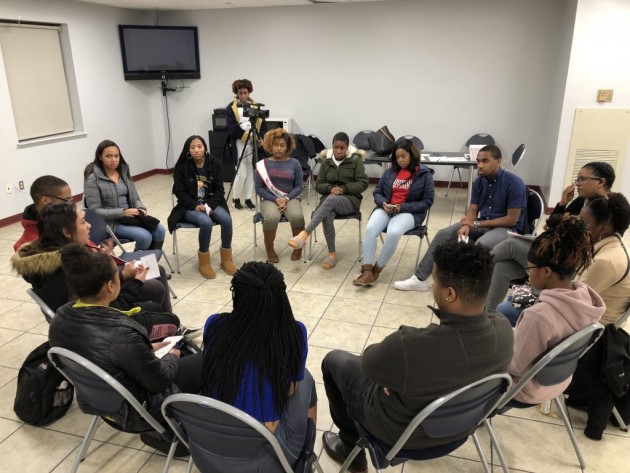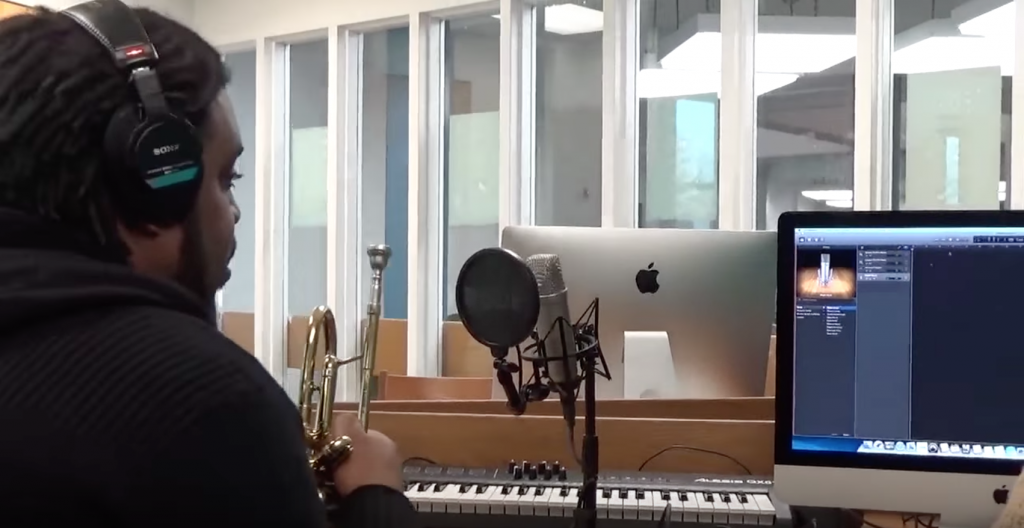Inventor Elwood Norris did not deliver on all the hype about Hypersonic Sound – the device that sends sound through a beam that is inaudible to anyone outside the beam–Saturday at the Arlington Central Library.
Norris was supposed to demonstrate the machine on the audience but the first memorable sound about 120 people in the library heard from Norris was an apology. There would be no Hypersonic Sound demonstration because he had broken his machine just minutes before its 2 p.m. show time.
“It really does work,” insisted Norris. “I promise.”
And so, the show went on. The adults stayed in their seats and the children remained attentive …for a time.
The hour-long program was one part history lesson, one part how-to, and two parts self-promotion.
Norris talked extensively about the one invention everyone came to see-but no one heard.
Hypersonic Sound is an ultrasound system that focuses sound into a narrow beam audible hundreds of feet away, and it was supposed to be the highlight of Saturday’s program. The audio laser, which works by merging ultrasonic waves to yield an isolated audible tone, was to be demonstrated on the ears of audience members. Norris says the beam is so accurate that someone standing in its pathway can hear it, but someone just one foot outside of it cannot.
Hypersonic Sound systems, sold for $500 a pop, can be experienced at museums, supermarkets, Costco, certain Home Depots, the GAP, and Wal-Mart Mexico. Other inventions showcased by the man who accidentally became an inventor included an in-ear FM radio, the first handheld digital recorder, a personal helicopter, and an ear piece that picks up sound through vibrations in skull bones.
Norris’ ear piece was sold to Jabra for use with cell phones for $15 million. The handheld recorder was sold to Sanyo for $5 million. Norris has just received his first order for eight personal helicopters, called AirScooters. The AirScooter can be flown for two hours at 55 mph. It can also be operated without a pilot’s license if flown below 400 feet and in non-restricted airspace.
For Norris, though, these inventions are just the tip of the iceberg. “Not very much has been invented yet,” he assured the audience.
According to Norris, there are nearly 7 million patents. One in three patents deals with cars. In his opinion, that leaves a lot of room for creativity.Creativity, however, cannot overshadow hard work.
“The definition of invention [is] something that is not obvious to a person in that field,” says Norris.
Norris advised potential inventors in the audience to make sure an idea really is original, and that there is indeed a market for it. Other key steps to being an inventor are “be dedicated, working harder, working really hard, [and] get lucky.”
“I was always jealous of Thomas Edison,” he said. “All the stuff he invented was easy.”
And on that note, Norris began his extensive explanation of how he “accidentally” became an inventor.An April Fool’s Day competition for a fake invention for Radio and Television News magazine turned into the creation of a linear tape player. A crude prototype and a $20,000 investment from a member of his church would set the pace for the rest of his life.
As the program came to a close, children were restless and Norris was hit by the most interesting question of the day.
“Can you invent a mechanical pencil that will do all your homework?” asked a curly-haired boy rocking back and forth on his knees on the floor in front of Norris.The audience erupted in laughter.
But the boy was serious. He calmly waited for Norris’ reply. The answer was no, but the boy stood by his concept. “Oh, well you should,” he told Norris.




